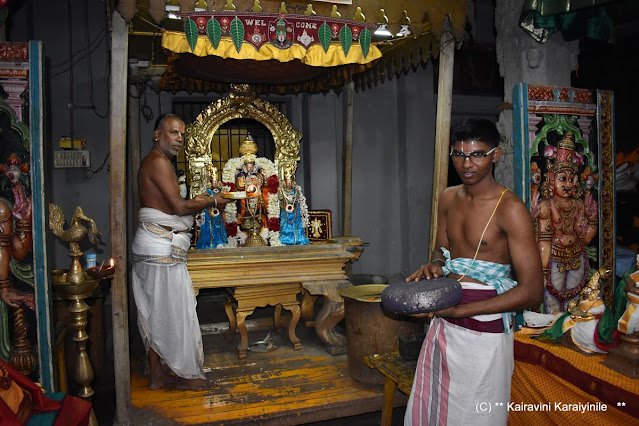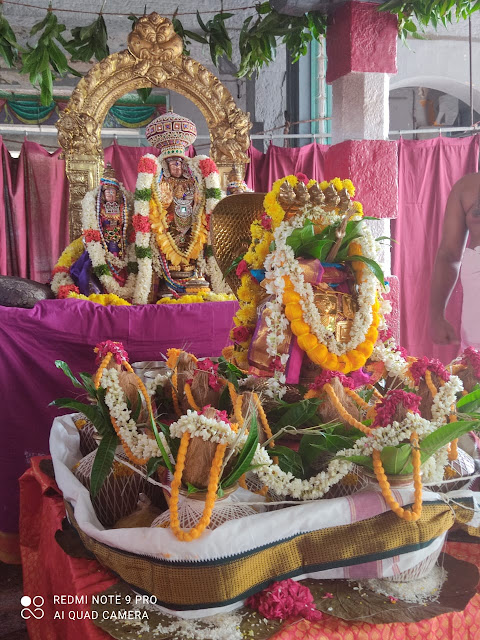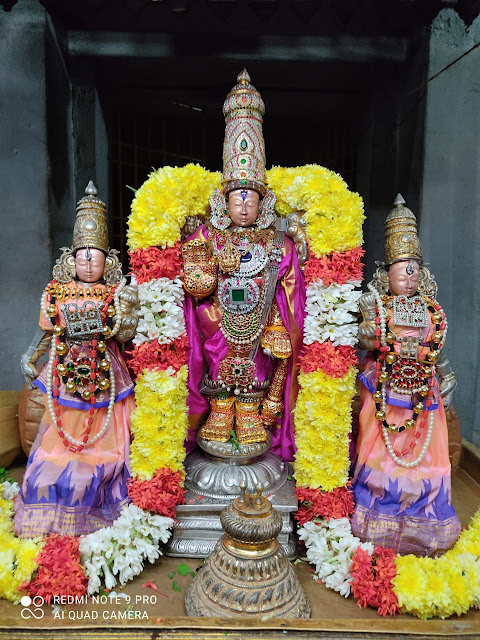வாள்களாகி நாள்கள் செல்ல நோய்மை குன்றி மூப்பெய்தி மாளும் நாள் வருமுன் என்
செய்ய வேண்டும் ??
The founder of Pallava dynasty of Kachi was Simhavishnu also known as
Avanisimha ~ he was the first soverign, who extended his influence beyond
Kanchipuram. King Mahendravarman succeeding him inherited the vast
kingdom and he perhaps had a long reign of 50 years to account for all his
achievements in the novel method of excavating rock-cut shrines. Stone
inscriptions too found their way to appear from his time.
Tamil Nadu has some beautiful ancient temples and of the many, the earliest extant group belongs to the Pallavas and the Chalukyas, while the subsequent groups fall into more or less unbroken lines, with Pallava or Chalukyan characteristics as their basis. The rock-architecture of Pallavas start with their cut-in temples familiarly called the rock-cut cave temples. These are essentially reproductions of mantaps which as excavations, repeat the interior aspects of pillared halls housing the sanctum-sanctorum. Some temples are real marvels exhibiting the contemporary arts and craft workmanship of Pallava days as the ornamental and sculptural decorations of the interiors are exceptional pieces of architecture, considering the hardness and texture of the rocks.
Now is the time for Pavithrothsvam in some temples – and here
are some photos of Thirupavithrothsavam at Singaperumal Kovil shared by my
friend Sri Seshadry @ Durai. The famed Padalathri Narasimhar Thirukovil is
located around 50 km away from Chennai on GST Road, closer to Chingleput and
has a Railway station too. The temple is very well connected and as one
gets down from the bus, the temple is around 100 meters away from the main
road. It is a rock-cut temple ~ a
beautiful sannathi of Lord Narasimha housed inside the cave and devotees can do
circumambulation around the hill housing the Lord. The temple dates
back to 8th Century built by Pallavas. Patalam means
red. Athri means hill. As Lord Narasimha appeared here furiously
with Red Eyes and huge as a mount, the place came to be known as
Patalathri. The inscriptions on the walls of the temple are from the
chola regime during the 10-11th centuries.
Narasimha appeared here providing darshan for Maharishi Jabali after his intense penance. Moolavar Ugra Narasimhar gives darshan in seated posture with his right leg bent – chathurbujam (four hands) – two holding Conch and Chakra; one abaya mudra and other resting on his lap. Lord has three eyes. Uthsavar is the pleasing Prahlada Varadhar. Thayar is Ahobilavalli having a separate sannathi on the right side of the main sannathi. There is sannathi for Sri Andal and for Alwar Acaryas. The temple follows Thenkalai tradition of worship based on Vaikasana Agamic tradition.
வாள்களாகி
நாள்கள் செல்ல நோய்மை குன்றி மூப்பெய்தி*
மாளு
நாளதாதலால் வணங்கி வாழ்த்தென் நெஞ்சமே*
ஆளதாகு
நன்மையென்று நன்குணர்ந்ததன்றியும்*
மீள்விலாதபோகம் நல்க வேண்டும் மால பாதமே. (verse from Thiruchandavirutham)
காலை சூரியன் உதித்து, நாட்பொழுது தீர்ந்து, இரவு வந்து - தினம் கடந்து செல்கிறது. இப்படி கடக்கும் அனுதினமும், நமக்கு ஒரு தினத்தை கூட்டி, நமது ஆயுளை அறுக்கும் வாள்கள் போன்று கழிய, பலவகை வியாதிகளாலும் மூப்பாலும், உடல் நலம் குன்றி - மனச்சோர்வும், ம்ருத்யு பயமும் சேர்ந்து, மரணமடைவதோர் நாள் நெருங்கிவிட்டதாய் மனம் அறிந்து பதைபதைக்கும். இவ்வுலக கவலைகளை மறந்து எம்பெருமானான ஸ்ரீமன் நாராயணனுக்கு ஆட்பட்டிருப்பதே நன்மையென்று, நன்கு உணர்ந்து, அவ்வெம்பெருமானைத் தொழுது, மால பாதமெனும், அப்பெருமானுடைய திருவடிகளே, மறுபடி திரும்பி வருதலில்லாத நித்யபோகம் என நல்க வேண்டும் என்பது திருமழிசை பிரானின் வாக்கு.
In this earth, with
dawn of the Sun and the day passing out days to our life and each day but
passes like a hanging saw as humans struggle with illness and
infirmity. With the day of death approaching for sure, there is only one
way – that of worshipping the only savior Sriman Narayana – Praise only thee,
do service unto Him, prostrate at His feet and pray for a permanence away from
the evils of earth, a life at heavenly abode with no return.
Mamandur Veeravalli Srinivasan Sampathkumar













No comments:
Post a Comment